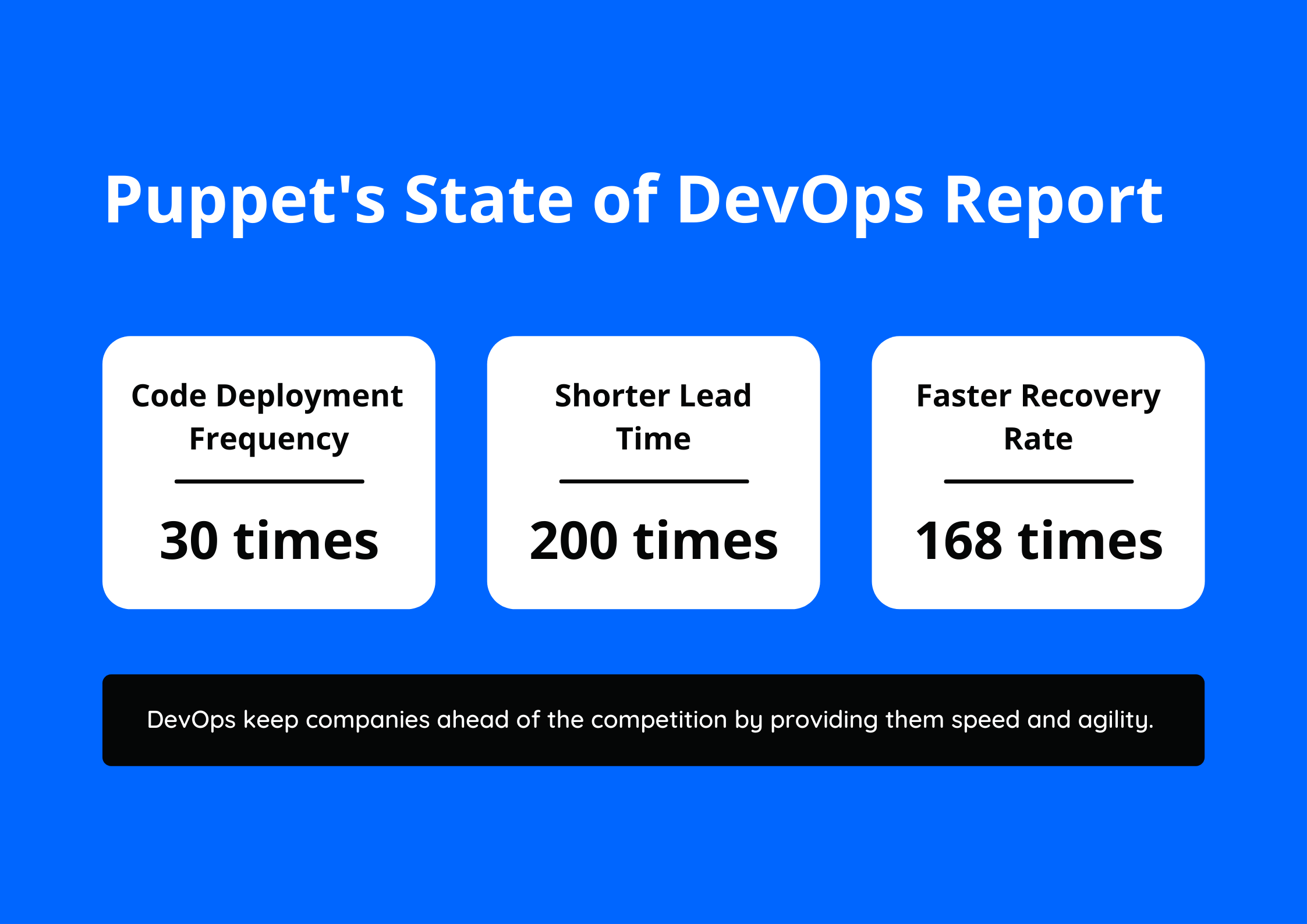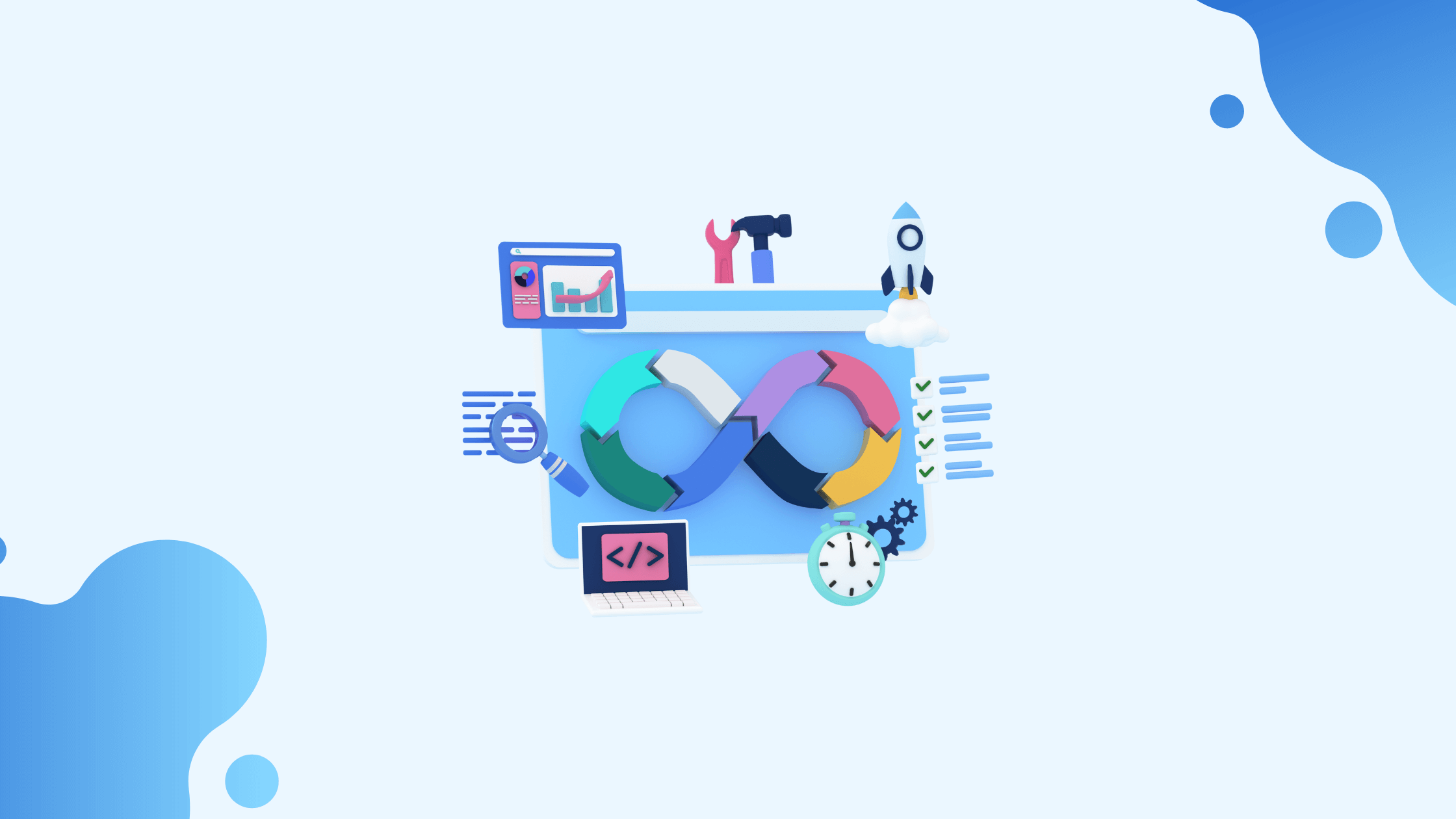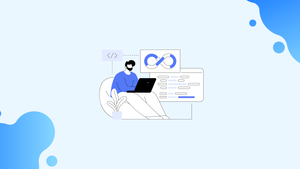With the increasing competition in the SaaS market, only the companies having a quality product along with the prompt delivery pattern supported by DevOps in place are going to rule the SaaS industry.
Companies having DevOps Tools/Technologies in place will be able to:
- Deliver new features reliably and quickly
- An application environment that is reliable and scalable
- Complete customer satisfaction and wonderful experience to the customers
All the above points are achievable if companies are implementing DevOps in a tightly-knit fashion in their Software Development Life Cycle. It will help them to gain a much-needed competitive advantage and stand out in the competitive SaaS market.
How DevOps keeps you Ahead
DevOps adoption within your company does not just give you speed, but also provides better team collaboration, profitability, and performance monitoring.
It provides you an edge over other startups, making users stick with your product instead of going to your competitor. Continuous delivery is mission-critical, and you can achieve it by automating every aspect of your software delivery process.
You need to automate every build from Dev Environment and QA to Pre Production and Production, which allows you to release new features frequently without the fear of application downtime and failed deployments. It speeds up your issue resolution process and allows you to keep up with the customer's needs.
As per Puppet's State of DevOps Report, companies that have implemented DevOps deploy code 30 times more frequently, they have 200 times shorter lead time 168 times faster recovery rate. In this way, DevOps keep you ahead of the competition.

Better Configuration Management
There are multiple environments with multiple purposes, and the environments become more complex as we move forward in the software development and delivery process. With configuration management, it becomes easy to ensure that the configuration of these environments is optimal.
Poor Configuration Management leads to leaks, data breaches, and system outages, and it affects testing on the large scale. It allows developers to spend time on more important tasks instead of the same repetitive tasks.
Frequent Updates
With the complete automated process, developers can now freely release new features in the software. Automated testing and frequent deployments allow errors to get resolved as soon as they are found, making developers confident to deploy code to the production environment.
Companies that are able to release frequent product updates for their customers, stay ahead in the competitive market as they satisfy their customer demands quickly as compared to the competition
Load Balancing
The Load Balancer ensures that the complete load is not put on the single server. It distributes client requests across multiple servers and ensures constant availability and reliability.
It is one of the minimum requirements for enterprises that work on more than one application server.
Get Started with DevOps in your Company
DevOps adoption happens gradually, it doesn't work well if you just scrape off everything old and bring everything new at once. There are various stakeholders involved in the Software Development Life Cycle, hence each of their requirements needs to be taken care of.
Evaluate your Architecture and Processes
Firstly, you need to make sure that your product is aligned with the DevOps Core Principles. It is recommended to have a microservices-based architecture. Fewer dependencies between different parts of the system and between different teams will minimize the time required to deploy changes into production.
Continuous Integration
It is a software development practice that allows developers to work at the same time on the source code and push their code to the shared repository where it goes through different testing stages.
Since developers can work on the shared repository, there is no need to wait for the separate sections to be combined on the release day. It brings speed, agility, and security to the development process.
Continuous Testing
Continuous testing ensures developers that the code is running the way it should in the live environment. If there are any bugs found during the testing process, then they will be able to resolve them without wasting resources later at the time of deployment.
Features that are having bugs will again be pushed to the development stage and in this way, Continuous Testing encourages continuous improvement.
Continuous Monitoring and Feedback
It is very important to monitor the products/system and provide continuous feedback throughout the development pipeline. There are ways to automate the monitoring process as well.
It allows developers to identify bugs or issues in real-time and find a quick resolution to them without impacting the end customer.
Continuous Delivery
Once the code is automatically built, tested, and packaged for release into production, it is now important to release the product updates to the customer without any hiccups.
Here, Continuous Delivery automates the release process so that the developers can release the build at a click of the button.
Continuous Deployment
Continuous Deployment unlike Continuous Delivery (CD) doesn't require any human intervention. It is simply the fully automated version of Continuous Delivery.
Before adopting the Continuous Deployment approach, companies need to have a rigorous testing environment. Starting with CI/CD will help you achieve the ultimate goal of Continuous Deployment. Here are the top 5 benefits of Deployment Automation.
Learn more about Continuous Integration, Continuous Delivery and Continuous Deployment in this article:

Phase Wise Implementation
At first, the process can seem daunting if you haven't yet adopted DevOps in your company. You need to be aware that it is just not the process shift but a cultural shift as well, so you should consider implementing it in stages.
Following are some steps in which you can break the implementation:
- Create an agile development process
- Start using cloud computing
- Implement CI/CD workflow for your application
- Automate the application deployment process
- Implement Testing Automation
To avoid the risk of having gaps in your DevOps process, make sure you have the proper infrastructure and tools to support your processes. To create a true DevOps environment, make sure that every stage of your development pipeline should be automated and agile.


